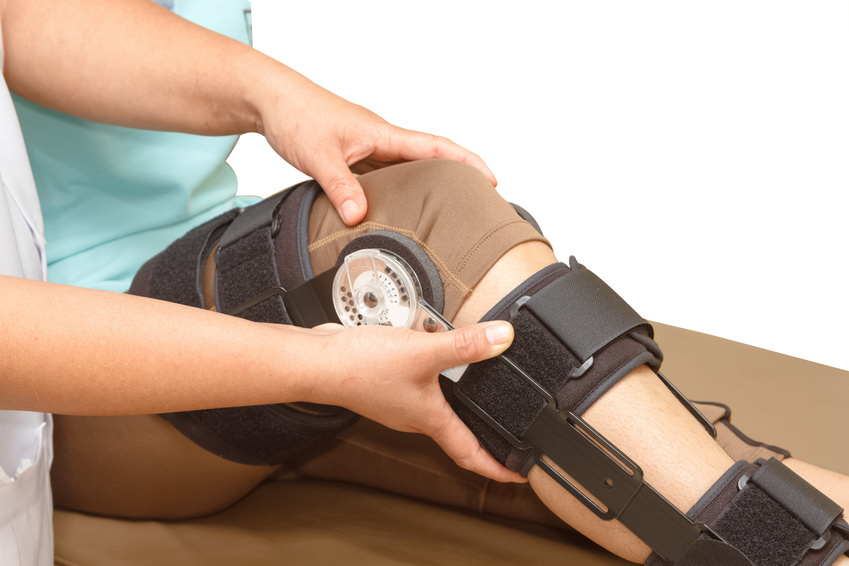ACL surgery can sound pretty scary to anyone, but not knowing all of the processes that follow can lead to an even greater level of fear and uncertainty. One of the most common questions I am asked when treating a patient after an ACL surgery is, “What is the Biodex Test?” This testing protocol is generally required by orthopedic surgeons at approximately 6 months post surgery to determine patient’s readiness to return to their desired sport or other recreational activities. The Biodex test involves utilizing a computer assisted machine to assess the patient’s isokinetic strength. The word “isokinetic” refers to an object moving at a constant speed with a varied resistance throughout a range of motion. The Biodex testing technique can be used at any joint in the body, but is very frequently used at the knee joint, especially after an ACL surgery.
When performing the Biodex test at the knee joint, the patient sits in an upright chair with his/her leg strapped to a movable part of the testing machine. The patient is instructed to fully straighten and then fully bend the knee for multiple repetitions. When performing these two motions, knee extension and knee flexion, the machine is able to measure the strength output by muscles on both sides of the upper leg. Resistance varies throughout the test, but will always be at a safe resistance level to limit joint compression forces, allow for pain free motion, and give quality data to measure strength output during the entire range of motion. The test results are used to objectively compare the surgical to the non-surgical side as well as comparing the quadriceps and hamstring muscles in the same leg. It’s beneficial to compare strength of muscles in the same leg after ACL surgery because one main risk factor that can lead to an ACL tear, or re-tear with return to sports, is an abnormal ratio of quadriceps strength to hamstring strength. The hamstring muscle does the same job as the ACL, which prevents a forward sliding of your shin in comparison to your knee. On the other hand, the quadriceps works against the ACL, as it pulls the shin forward and puts a lot of pressure or tension on the ACL.
The information from the Biodex test can be very beneficial in obtaining specific measurements on total leg strength and the strength of specific muscles listed above. What this machine/test does not do is help with the transition into running, jumping, cutting and other sports specific activities. The test might tell you that you are strong enough to return to your activities, but it does not tell you how to safely perform those activities and prevent re-injury. Visit your local Freedom Physical Therapy to work one-on-one with a physical therapist skilled in ACL rehab to help you become your strongest self, both with the biodex testing and with your favorite recreational activity.
http://www.biodex.com/support/faq/physical-medicine/product/167
Erin Bafunno DPT
Physical Therapist


Useful information. Many times an ACL injury patient may be a sportsperson itching to resume back the active physical life, but an objective assessment through Biodex may be more convincing to delay the resumption of any high-impact sports.
Would it be worthwhile for a person who has had an ACL reconstruction to be biodex tested on occasion to help with preventative reoccurrence?
Good Question!
To my current knowledge, there is no research I have come across recommending continued biodex testing post surgery, especially for the average individual. For competitive athletes that might have easier access to this equipment, it could definitely be a beneficial tool as it is the closest we can get to true objective data without bias of the tester when assessing strength throughout a specific range of motion.
For the patients I work with that want to return to their general workouts or my very competitive middle or high school athletes, I prefer to reference more functional testing in conjunction with biodex results to assess their abilities on an ongoing basis. These activities can include double leg broad jump, single leg hops or single leg triple hop test to allow assessment of landing mechanics, single leg stability, and comparison of strength and power in the surgical versus non surgical side. There has been a decent amount of research that promotes the importance of the assessment of the jump/hop tests and its correlation to reduction in re-injury if patients meet a certain criteria post surgery.
Is it still recommended to use an anti-shear device when doing testing and training on ACL patients.